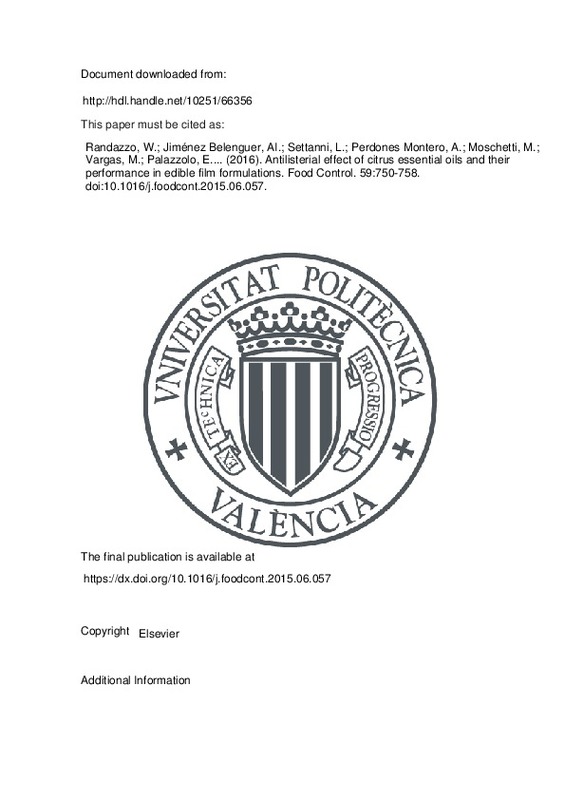JavaScript is disabled for your browser. Some features of this site may not work without it.
Buscar en RiuNet
Listar
Mi cuenta
Estadísticas
Ayuda RiuNet
Admin. UPV
Antilisterial effect of citrus essential oils and their performance in edible film formulations
Mostrar el registro completo del ítem
Randazzo, W.; Jiménez Belenguer, AI.; Settanni, L.; Perdones Montero, A.; Moschetti, M.; Palazzolo, E.; Guarrasi, V.... (2016). Antilisterial effect of citrus essential oils and their performance in edible film formulations. Food Control. 59:750-758. doi:10.1016/j.foodcont.2015.06.057
Por favor, use este identificador para citar o enlazar este ítem: http://hdl.handle.net/10251/66356
Ficheros en el ítem
Metadatos del ítem
| Título: | Antilisterial effect of citrus essential oils and their performance in edible film formulations | |
| Autor: | Randazzo, Walter Settanni, Luca Perdones Montero, Ángela Moschetti, Marta Palazzolo, Eristanna Guarrasi, Valeria Germana, Maria Antonietta Moschetti, Giancarlo | |
| Entidad UPV: |
|
|
| Fecha difusión: |
|
|
| Resumen: |
[EN] The antimicrobial activity of eight essential oils (EOs) extracted from the fruit peel of Citrus genotypes
(orange, mandarin and lemon) was evaluated against 76 strains of Listeria monocytogenes, previously
isolated ...[+]
|
|
| Palabras clave: |
|
|
| Derechos de uso: | Reserva de todos los derechos | |
| Fuente: |
|
|
| DOI: |
|
|
| Editorial: |
|
|
| Versión del editor: | https://dx.doi.org/10.1016/j.foodcont.2015.06.057 | |
| Agradecimientos: |
WR was supported by the "Student Mobility for Placement - SMP" grant of the EU Life Learning Program. The authors thank the "Azienda Sperimentale Palazzelli C.R.A. - Centro di ricerca per l'agrumicoltura e le colture ...[+]
|
|
| Tipo: |
|







![[Cerrado]](/themes/UPV/images/candado.png)


